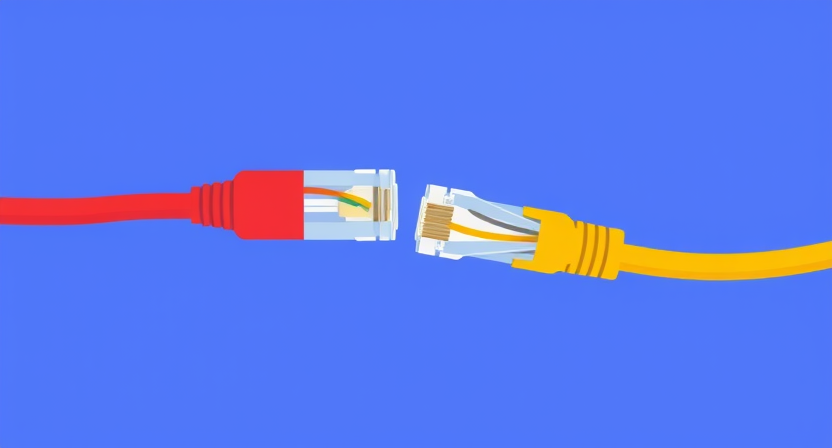
When it comes to building a reliable network for your home or small business, choosing the right Ethernet cable for your home is essential. However, that doesn’t mean the highest grade is always the best choice. For instance, with so many options like Cat 5e, Cat 6, Cat 7, and beyond, it’s easy to feel overwhelmed. As a result, many assume that higher-rated copper cables are always better. However, this isn’t necessarily the case.
In this blog, we explain why cables like Cat 6 or even Cat 5e are ideal for most residential and for applications such as gaming, streaming, and connecting IoT devices. We’ll cover why higher-grade cables like Cat 7 or Cat 8 aren’t practical. The importance of using full copper outdoor-grade cables, and why shielding isn’t necessary in most homes. Plus, we’ll clarify how cable lengths impact performance and how to ensure your network delivers seamless connectivity without overcomplicating your network infrastructure.
We have categorised the Ethernet cables based on their performance capabilities:
Higher-grade cables, especially Cat 7 and Cat 8, have thicker shielding and a smaller bend radius, making them harder to work with. They’re less flexible, damage more easily, and don’t terminate neatly in standard RJ45 connectors for homes as there is limited space for the cable. For home networks, Cat 5e or Cat 6 are far more practical and user-friendly.
Cat 7 and Cat 8 cables are significantly more expensive to buy and install, yet the average home won’t see a measurable performance improvement over Cat 6. Internet speeds in residential areas rarely exceed 2.5 Gbps, and even high-end setups rarely push beyond 10 Gbps.
The rigidity of higher-grade cables not only complicates installation but also increases the risk of damage. Excessive bending or improper termination can cause the cables to become microphonic, picking up interference, which can disrupt network performance. In home environments, where cables may need to navigate through challenging spaces like; walls, attics, or crawl spaces. The durability and ease of handling provided by Cat5e or Cat6 cables are advantageous.
Cat 5e and Cat 6
Cables like Cat 7 and Cat 8 are designed for high-performance environments, such as data centres and enterprise-level networks. Where ultra-high bandwidth and shielding are necessary to prevent crosstalk and interference, if run close to power lines in industrial environments. They’re less flexible, damage more easily, and don’t terminate neatly in standard Ethernet Sockets. For home networks, Cat 5e or Cat 6 are far more practical.
For home network enthusiasts, who are keen to select the right Ethernet cable for your home network. The key to a great setup is choosing cables that balance performance, practicality, and cost. Cat 5e and Cat 6 are the perfect fit for most residential networks, offering flexibility, ease of use, and enough capacity to handle today’s and tomorrow’s demands. While higher-grade cables like Cat 7 and Cat 8 are impressive but unnecessary for most homes. The Telecommunications Industry widely recognises that Cat 6 is a suitable choice for future-proof residential networks. As it supports 10 Gbps speeds without the complexity of higher-grade cables.
If you’re setting up or upgrading your home network and want expert advice, feel free to reach out. We specialise in creating seamless, high-performance networks for homes and small businesses. No overengineering, just reliable results. By optimising your network with the right Ethernet cable for your home, you’ll ensure a smooth, efficient, and future-ready system without breaking the bank.

Leave it to the WiFi technicians to handle all the details of the installation process.
You’ve researched how to fix slow internet speeds and booked your expert WiFi installation professionals. Finally upgrade day is nearly here, it’s time to get the internet fixed! There have been months of dealing with those agonisingly frustrating drabs of signal, buffering and dropped connections. Very soon you will be seamlessly streaming shows, online gaming without interruptions and simply enjoying the digital world on your extended WiFi. The constant struggle and the agony of sluggish internet will be a distant memory.
Now you’re counting down the days to faster browsing, smoother and seamless connectivity but you’ve been mulling over the whole idea of having work done in your home and are feeling a little apprehensive. The thought of strangers in your home, drilling holes and setting up gadgets is a tad unsettling.
In this post, we discuss what to expect on the installation day. Where our WiFi installation team to take care of the whole process. We’re here to demystify the process and show you why enlisting the help of our friendly WiFi specialists is easy and a game-changer for your home network.
A reliable and robust WiFi network is the backbone of every home or business. Whether you live in a spacious, irregular-shaped property or a home built under heritage construction. Ensuring your property is equipped with a seamlessly functioning wireless network is essential. So here at NetLinx Cabling we believe that engaging the services of expert WiFi installation professionals should be as simple and hassle-free as possible. A proficient WiFi installer can tailor the installation to accommodate the intricacies of your home, ensuring optimal coverage in every nook and cranny. Our services are suited for all levels of technical knowledge. The friendly technicians are more than happy to answer your questions to help fill in the gaps on your tech knowledge.
A correctly installed home network goes beyond merely providing internet access; it becomes the cornerstone of your smart home. Here are some key advantages:
Ever wondered what happens behind the scenes? Let’s break it down, step by step.
1) Project Requirements: A WiFi engineer will conduct an assessment of your space. This includes analysing the layout, identifying potential obstacles, and discussing your specific needs, either on-site or remotely. At this stage an experienced wireless network expert will plan the optimal cable routes for a tidy finish with cables expertly concealed, leaving your space clutter-free. It’s an opportunity to discuss your budget, any preferences around cable standards, brands and what level of overall network management you require. For our domestic clients we normally recommend Ubiquiti kit UniFi WiFi – Ubiquiti.
For most projects a site survey incurs no charge. Apart from some cases where the property or business is much larger and there are bespoke requirements. If the
2) Quotation and booking: We will send a quote, based on the requirements discussed. As long as the requirements do not change during the installation. It covers the total cost of the entire project, parts, labor and taxes. When you accept the quote, we will schedule the installation.
3) Installation Day: We pride ourselves on providing a respectful in-Home Service. Our WiFi set-up professionals prioritise care and respect for your space. They treat your home as if it were their own, ensuring a smooth installation process. Minimising disruption to your daily routine as much as possible. We have received lots of positive feedback positive feedback from our past customers.
Finally the WiFi installation day is here! Our fully insured WiFi technicians will do everything they can to ensure an easy as possible hassle-free experience for you and your family or colleagues.
In conclusion, connectivity is key and choosing the right local WiFi engineer is paramount. In the North West, our WiFi installation services offer not just expertise but a commitment to providing you with a home network that exceeds expectations. For homeowners in the North West with large, irregular, or heritage construction properties, the expertise of WiFi specialists ensures a network tailored to your unique needs.
I hope this post about what to expect on your home network up-grade day when you enlist the expertise of WiFi installation specialists has been useful. And addressed your concerns. If you would like to learn more, visit our website to get in touch with a local WiFi installation technician.
Here's what our customers are saying about us.